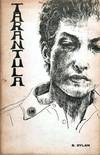
ICONES FLORAE GERMANICAE ET HELVETICAE SIMUL PEDEMONTANAE, VOLUME XXII; ON SPINE: BOTANICAL HAND-COLORED PLATES, 19TH CENTURY
by Reichenbach, H. (Heinrich) G. (Gottlieb)
- Used
- Hardcover
- Condition
- Very Good Plus
- Seller
-
Eugene, Oregon, United States
Payment Methods Accepted
About This Item
Lipsiae, F. Hofmeister, 1867. Hardcover. Very Good Plus. Quarto, 8.5 x 11.2 in. Pagination: First plate has "1" at top left, and "MMLII" (2052) at top right; plates progress to "220" and "MMCCLXXI" (2271). 220 hand-colored plates of orchids, alongside numbered ink sketches of each plant's specific parts. No half-title, title, or publisher's page; title is indicated only on spine. Plates marked "Rchb.fil.del" at bottom left, and "Berthold sc.", "Werner sc." or "Scherell sc." on bottom right. Modern half-calf over contemporary marbled boards. Seven gilt bands and gilt title to rebacked spine. Rubbing to board edges. Plain endpapers. Hinges reinforced with green cloth library tape. Two inch closed tear at tape edge to front free endpaper. Nickel-sized round stain in upper right corner of first plate. Plates are sharp and bright. [Stafleu & Cowan 8885 ]. Heinrich Gustav Reichenbach (Dresden, 3 January 1823 - Hamburg, 6 May 1889) was a botanist and the foremost German orchidologist of the 19th century. His father Heinrich Gottlieb Ludwig Reichenbach (author of Icones Florae Germanicae et Helveticae) was also a well-known botanist. He started his study of orchids at the age of 18 and assisted his father in the writing of Icones. He became a Doctor in Botany with his work on the pollen of orchids. Soon after his graduation, Reichenbach was appointed to the post of extraordinary professor of botany at the Leipzig in 1855. He then became director of the botanical gardens at the Hamburg University (1863-1889). At that time, thousands of newly discovered orchids were being sent back to Europe. He was responsible for identifying, describing, classifying. Reichenbach named and recorded many of these new discoveries. He probably was not the easiest of personalities, and used to boast about his many descriptions, some of which were superficial, leading to a great deal of taxonomic confusion. H.G. Reichenbach became the world's leading authority on orchids, after the death of his friend, the 'father of orchidology' John Lindley in 1865. "Orchid specimens from all over the world were sent to him for identification, and these, together with his copious notes and drawings, forms an immense herbarium which rivaled that of Lindley at Kew". His immense herbarium and library were bequeathed to the 'Naturhistorisches Museum' in Vienna, Austria (instead, as expected, to the Kew Gardens), on the condition that it would not be consulted during the first 25 years after his death. Reichenbach probably acted this way out of resentment of the appointment of Robert Allen Rolfe, a self-taught orchid expert, as the top taxonomist at Kew. This resulted in a great number of double or multiple descriptions of orchid species, which had to be corrected afterwards. After Reichenbach's death, his work was continued by Friedrich Wilhelm Ludwig ("Fritz") Kraenzlin (1847-1934). In 1886, Frederick Sander commissioned Henry George Moon (1857-1905), a pure colourist, to paint 192 watercolour plates of orchids with descriptions by Reichenbach (1888-1894). These monthly publications became known as the Reichenbachia.
Reviews
(Log in or Create an Account first!)
Details
- Bookseller
- Aardvark Rare Books
(US)
- Bookseller's Inventory #
- 85668
- Title
- ICONES FLORAE GERMANICAE ET HELVETICAE SIMUL PEDEMONTANAE, VOLUME XXII; ON SPINE: BOTANICAL HAND-COLORED PLATES, 19TH CENTURY
- Author
- Reichenbach, H. (Heinrich) G. (Gottlieb)
- Format/Binding
- Hardcover
- Book Condition
- Used - Very Good Plus
- Quantity Available
- 1
- Publisher
- Lipsiae, F. Hofmeister
- Date Published
- 1867
- Keywords
- Orchids, Botany
- Bookseller catalogs
- NATURAL HISTORY;
Terms of Sale
Aardvark Rare Books
Returns Policy: 30 Day Returns, with prior approval, in same condition as when shipped.
About the Seller
Aardvark Rare Books
Biblio member since 2004
Eugene, Oregon
About Aardvark Rare Books
Member of ABAA, ILAB, & IOBA: Continuously in business since 1995.USPAP-COMPLIANT APPRAISALS of rare books, manuscripts, collections and archives. Accredited Member AMERICAN SOCIETY OF APPRAISERS (ASA)Toll-Free Order Line: 1-800-434-6033.
Glossary
Some terminology that may be used in this description includes:
- Plate
- Full page illustration or photograph. Plates are printed separately from the text of the book, and bound in at production. I.e.,...
- Rubbing
- Abrasion or wear to the surface. Usually used in reference to a book's boards or dust-jacket.
- Spine
- The outer portion of a book which covers the actual binding. The spine usually faces outward when a book is placed on a shelf....
- Quarto
- The term quarto is used to describe a page or book size. A printed sheet is made with four pages of text on each side, and the...
- Rebacked
- having had the material covering the spine replaced. ...
- Gilt
- The decorative application of gold or gold coloring to a portion of a book on the spine, edges of the text block, or an inlay in...
- Marbled boards
- ...
- Edges
- The collective of the top, fore and bottom edges of the text block of the book, being that part of the edges of the pages of a...
- New
- A new book is a book previously not circulated to a buyer. Although a new book is typically free of any faults or defects, "new"...
- Cloth
- "Cloth-bound" generally refers to a hardcover book with cloth covering the outside of the book covers. The cloth is stretched...








